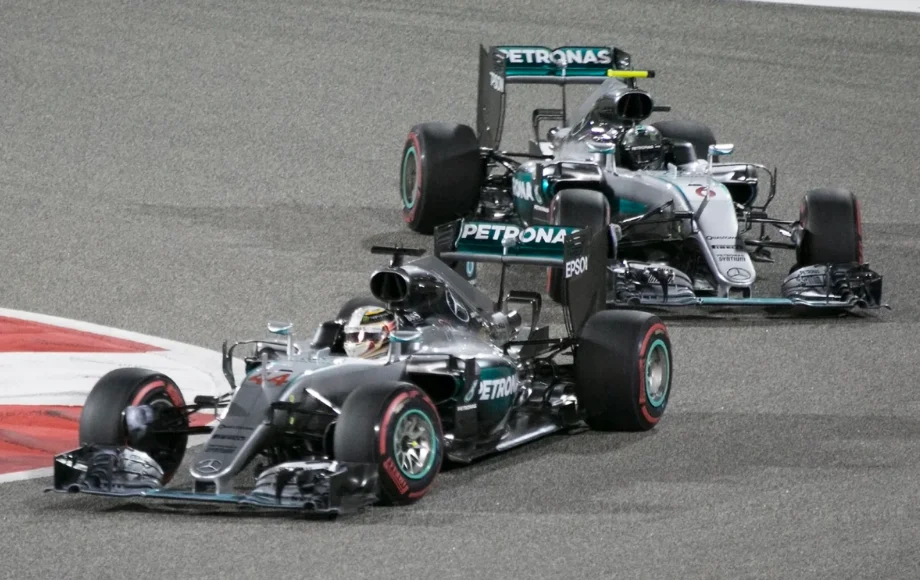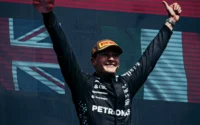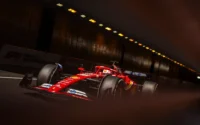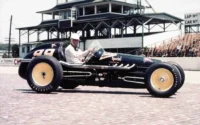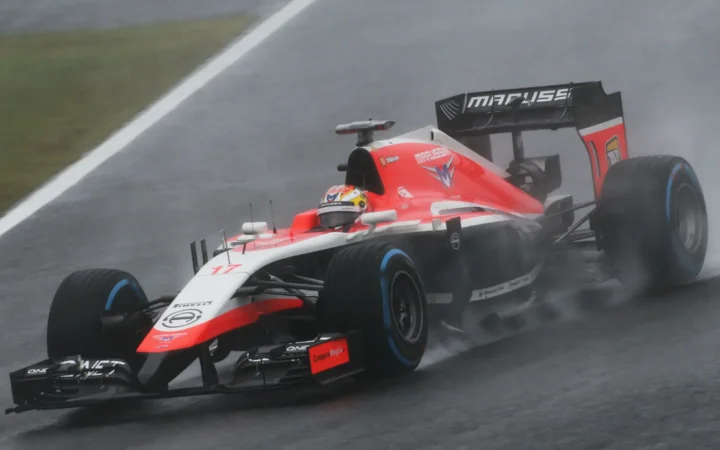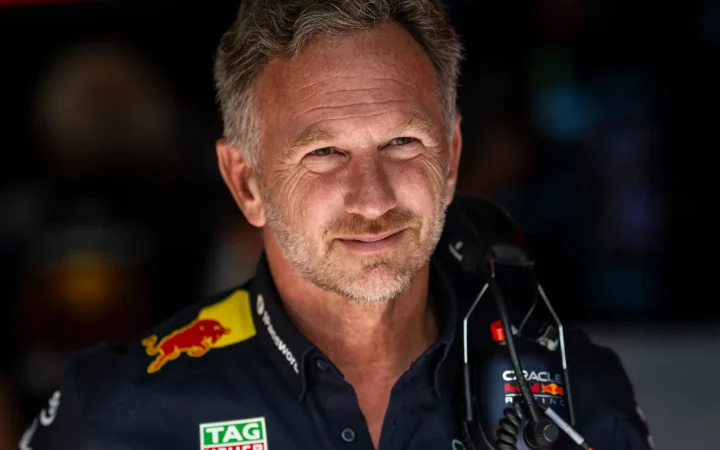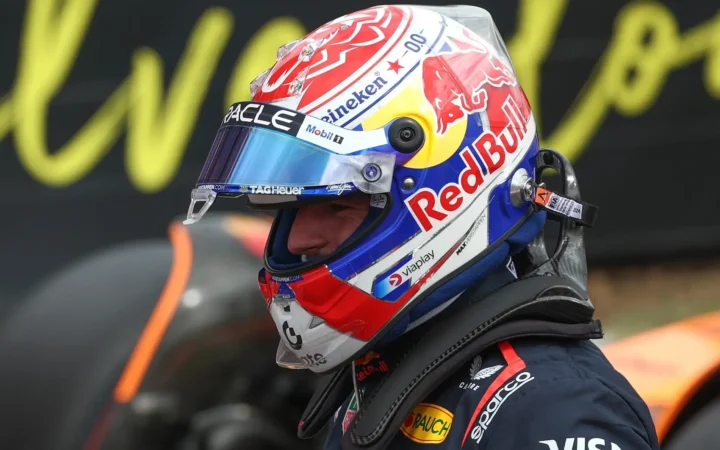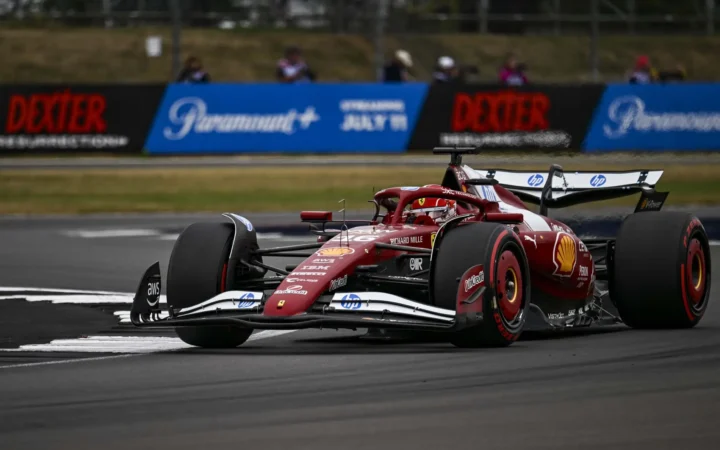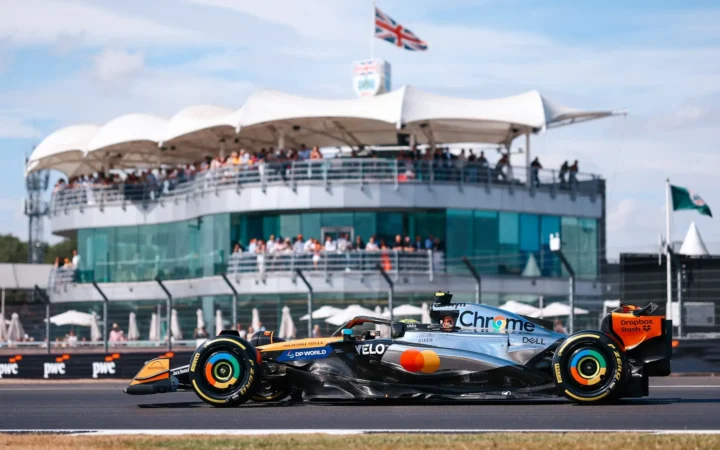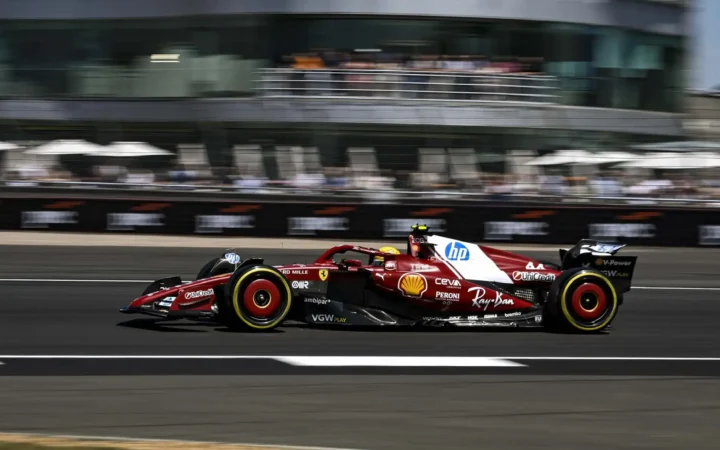The 2016 Abu Dhabi Grand Prix was not just any ordinary Grand Prix; it was the thrilling conclusion to the 2016 F1 World Championship and held the key to crowning the season’s drivers’ champion.
With the spotlight firmly fixed on the Mercedes team and its star drivers, Nico Rosberg and Lewis Hamilton, teammates but fierce rivals, the 2016 Abu Dhabi Grand Prix was set to be a battle royale between these two outstanding drivers.
The stage was set for a gripping showdown on the Yas Marina Circuit, one that would be remembered as a defining moment in the careers of both Nico Rosberg and Lewis Hamilton.
2016 Abu Dhabi Grand Prix
On November 27, 2016, the Yas Marina Circuit in Abu Dhabi played host to the final race of the 2016 F1 World Championship, officially titled the 2016 Formula 1 Etihad Airways Abu Dhabi Grand Prix. This event marked the eighth time the Abu Dhabi Grand Prix had featured on the race calendar since 2009.
As the final race of the championship, the weekend held significant implications for the World Drivers’ Championship, with Nico Rosberg, the defending race winner from 2015, leading his teammate Lewis Hamilton by twelve points. Their team, Mercedes, boasted a 236-point lead over Red Bull Racing in the World Constructors’ Championship. For Rosberg, finishing on the podium was critical to securing his championship title, while Hamilton needed a podium finish to keep his mathematical chances alive.
The race started with Hamilton in pole position and ended with him claiming the win, with Rosberg securing second, thereby clinching his first-and-only World Drivers’ Championship. Sebastian Vettel rounded out the podium with a third-place finish.
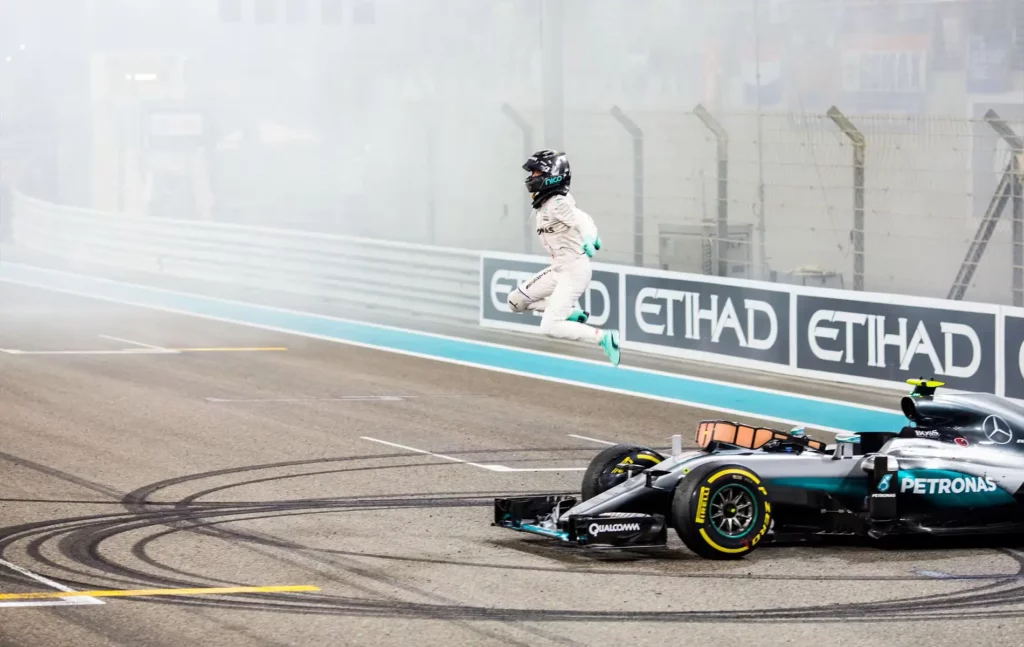
Following the race, Nico Rosberg announced his retirement from Formula 1, making the Abu Dhabi Grand Prix his farewell appearance in the sport. The 2016 event also marked the final outing for the Manor team, as they ceased operations before the start of the 2017 season, reducing the grid to twenty Formula 1 drivers in 2017. Esteban Gutierrez and Felipe Nasr also participated in their last Grand Prix. At the same time, it was widely believed to be the final Grand Prix for Jenson Button, although he would later substitute for Fernando Alonso at the 2017 Monaco Grand Prix.
Championship on the line
Lewis Hamilton trailed Nico Rosberg by 12 points before the season’s final race, creating a scenario where both drivers had a chance to win the world championship.
Hamilton could claim victory if he placed first and Rosberg finished fourth or worse or placed second or third while Rosberg finished eighth or ninth. A fourth-place finish by Hamilton and an eleventh-place or worse by Rosberg would also lead to a Hamilton victory.
On the other side of the Mercedes garage, Rosberg could emerge triumphant if he placed on the podium, finished sixth or better, while Hamilton failed to win, or placed eighth or higher while Hamilton placed third or lower. Rosberg would also win if Hamilton failed to make the podium and placed fifth or lower.
What happened in the Abu Dhabi Grand Prix 2016?
Opening laps
The race started with Lewis Hamilton leading the pack while keeping a watchful eye on Nico Rosberg’s movements in the first corner. Kimi Räikkönen moved into third, followed by Daniel Ricciardo. Sebastian Vettel, Sergio Pérez, Nico Hülkenberg, Fernando Alonso, Felipe Massa, and Valtteri Bottas completed the top ten racers in the initial laps.
A pivotal moment came when Max Verstappen’s vehicle spun, pushing him down to 19th after a slight knock with Nico Hülkenberg‘s Force India. The Red Bull Racing team opted for a strategic plan by beginning the race on the more durable, super-soft tyres instead of the ultra-soft tyres selected by the top 10 drivers on the grid. Max Verstappen made a stunning comeback, climbing to 13th place by the fifth lap and getting closer to the race leader, Hamilton, who was only 19 seconds ahead.
The opening laps also had some early set backs, with Kevin Magnussen bowing out on lap 5 due to suspension damage from an early collision. The fight between Force India and Williams continued for 6th and 9th, with Alonso in the middle of the two teams. Unfortunately, Valtteri Bottas had to retire on lap 6 due to suspension issues.
Pit stops
On lap 7, Mercedes and Ferrari brought in their leading drivers, Hamilton and Räikkönen, for their first pit stops, followed by Rosberg and Vettel in subsequent laps. Red Bull also reacted by pitting Ricciardo and fitting him with yellow-walled soft tyres, a move that was copied by the other front-running cars. Rosberg maintained his position ahead of Räikkönen after the pit stop, but the yet-to-pit Red Bull of Verstappen stood between him and the race leader, Hamilton.
Jenson Button retired on lap 12 while running in 8th place due to a broken right front suspension. A few laps later, due to gearbox issues, Daniil Kvyat retired from 16th on lap 14.
Meanwhile, Mercedes advised Rosberg to be careful when racing Verstappen, anticipating that the Dutch driver would soon pit, giving Rosberg clean air without an on-track battle. Red Bull Racing took a more conservative approach, keeping Verstappen out as long as possible to finish the race with only one pit stop, holding up Rosberg in the process. The risk Verstappen’s strategy posed to Rosberg became clear, with Räikkönen catching him and Vettel making progress, too. Rosberg was told to pass Verstappen on track, a move he finally made on lap 20, and went on to begin narrowing the gap to Hamilton.
The Mercedes drivers pitted for their final stint on soft tyres on laps 28 and 29, with Rosberg enjoying a comfortable 4-second lead over Max Verstappen, followed by Ricciardo and Räikkönen. Vettel, aiming for a short final stint on the faster red-walled super-soft tyres, took the lead, with all other drivers on slower, older soft tyres. Mercedes became concerned about Hamilton’s slower pace, which nearly matched Vettel’s lap times despite Vettel’s much older tyres, prompting questions about the reason for Hamilton’s pace.
With 18 laps remaining, Vettel pitted to switch to the super-soft tyres but dropped to 6th place, increasing Mercedes’ concerns. On lap 41, Hamilton asked about the pace of the cars around them, with Vettel clocking 1 minute 44.6 seconds and a one-stopping Verstappen slower at 1 minute 45.9 seconds. Hamilton then began to slow down the pace significantly, clocking 1 minute 46s, allowing the chasing pack to catch up while keeping Rosberg around one second behind. The track’s challenging layout made overtaking difficult, which made this strategic move effective. At this point, the Mercedes pit wall repeatedly urged Hamilton to increase his pace, that fell on deaf ears.
Final laps
Nearing the later stages of the race, Carlos Sainz and Jolyon Palmer were having their own on-track battle, eventually leading to Renault driver Palmer missing his braking point and colliding with Sainz’s Toro Rosso. This unfortunate incident caused Carlos Sainz to retire from the race, and Palmer was given a 5-second penalty.
Meanwhile, Vettel had overtaken Räikkönen, Ricciardo, and Verstappen, catching up to Rosberg by lap 50. Thanks to Hamilton’s tactics, Verstappen was also able to close the gap on Vettel.
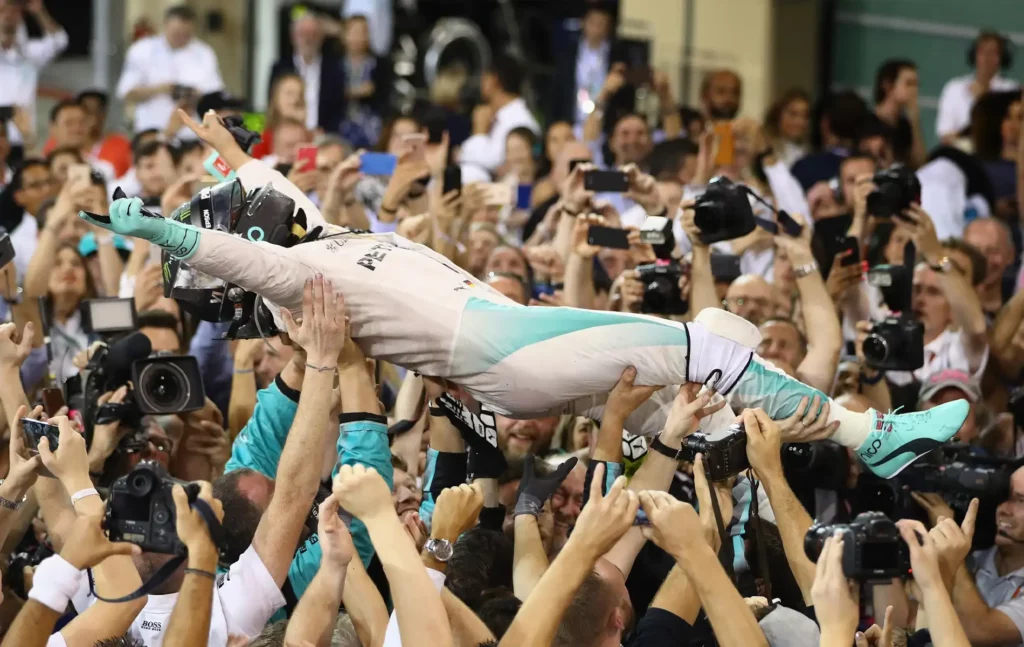
In the penultimate lap, Vettel made a daring move to overtake Rosberg, who defended his position fiercely. Red Bull Racing also encouraged Verstappen to close in on Vettel to fall within 1 second and take advantage of his DRS in case of any mistakes. Hamilton’s actions had the potential to deny Rosberg his first championship win. Although Mercedes’ F1 Team Principal, Toto Wolff, understood Hamilton’s competitive spirit, he did not fully endorse his refusal to obey team orders. At the same time, commentators and fans alike argue that F1 drivers should be free to race how they want.
Despite the last stint dramas of the Mercedes team, Rosberg secured second, and he was crowned the 2016 Drivers’ Champion.
Why did Rosberg retire?
Nico Rosberg announced his retirement from Formula 1 just days after winning the 2016 World Drivers’ Championship. There were several reasons for his retirement:
- Achieving His Dream: Rosberg had achieved his lifelong dream of becoming a Formula 1 World Champion. After years of intense competition and being in the shadow of his teammate Lewis Hamilton, Rosberg finally secured the championship title. Winning the championship was a culmination of his career goals, and he felt it was the right time to retire on a high note.
- Family and Personal Life: Rosberg voiced his desire to spend more time with his family. The demanding schedule of F1 often keeps drivers away from their loved ones, and Rosberg wanted to prioritise his family life after his racing career.
- Defending A Title: Defending an F1 Championship comes with increased expectations and pressure. Rosberg recognised that defending the title would require the same level of commitment and effort in 2016, and he wanted to step away from the sport on his terms without the added pressure of defending a title.
Why did Manor Racing quit F1?
Manor Racing, formerly known as Marussia and Virgin Racing, faced financial difficulties throughout their time in F1 and ultimately ceased its Formula 1 operations for several reasons:
- Financial Struggles: Manor Racing operated on a relatively small budget compared to the bigger and more established teams. This financial constraint made it difficult for Manor to compete effectively and develop competitive cars or attract the top drivers.
- Lack of Sponsorship: The compounding effect of not being competitive made it hard for the team to secure sponsorship deals and attract financial support. A chicken and egg scenario where they needed money to be competitive but had to be competitive to attract the money.
- Competitive Pressure: Formula 1 teams that find themselves at the back of the grid often find it challenging to score points and secure revenue through prize money. Manor Racing consistently finished lower down the pack or last.
- Changing Ownership: The team went through various ownership and name changes, which added instability to the team and their operations.
Due to these challenges, Manor Racing decided to withdraw from Formula One at the end of the 2016 season.
2016 Abu Dhabi Grand Prix Race Results
| Pos | No | Driver | Car | Laps | Time/retired | Pts |
|---|---|---|---|---|---|---|
| 1 | 44 | Lewis Hamilton | Mercedes | 55 | 1:38:04.013 | 25 |
| 2 | 6 | Nico Rosberg | Mercedes | 55 | +0.439s | 18 |
| 3 | 5 | Sebastian Vettel | Ferrari | 55 | +0.843s | 15 |
| 4 | 33 | Max Verstappen | Red Bull Racing TAG Heuer | 55 | +1.685s | 12 |
| 5 | 3 | Daniel Ricciardo | Red Bull Racing TAG Heuer | 55 | +5.315s | 10 |
| 6 | 7 | Kimi Räikkönen | Ferrari | 55 | +18.816s | 8 |
| 7 | 27 | Nico Hülkenberg | Force India Mercedes | 55 | +50.114s | 6 |
| 8 | 11 | Sergio Pérez | Force India Mercedes | 55 | +58.776s | 4 |
| 9 | 19 | Felipe Massa | Williams Mercedes | 55 | +59.436s | 2 |
| 10 | 14 | Fernando Alonso | McLaren Honda | 55 | +59.896s | 1 |
| 11 | 8 | Romain Grosjean | Haas Ferrari | 55 | +76.777s | 0 |
| 12 | 21 | Esteban Gutierrez | Haas Ferrari | 55 | +95.113s | 0 |
| 13 | 31 | Esteban Ocon | MRT Mercedes | 54 | +1 lap | 0 |
| 14 | 94 | Pascal Wehrlein | MRT Mercedes | 54 | +1 lap | 0 |
| 15 | 9 | Marcus Ericsson | Sauber Ferrari | 54 | +1 lap | 0 |
| 16 | 12 | Felipe Nasr | Sauber Ferrari | 54 | +1 lap | 0 |
| 17 | 30 | Jolyon Palmer | Renault | 54 | +1 lap | 0 |
| NC | 55 | Carlos Sainz | Toro Rosso Ferrari | 41 | DNF | 0 |
| NC | 26 | Daniil Kvyat | Toro Rosso Ferrari | 14 | DNF | 0 |
| NC | 22 | Jenson Button | McLaren Honda | 12 | DNF | 0 |
| NC | 77 | Valtteri Bottas | Williams Mercedes | 6 | DNF | 0 |
| NC | 20 | Kevin Magnussen | Renault | 5 | DNF | 0 |
2016 Final Championship Standings
2016 Final Drivers’ Championship Standings
| Pos | Driver | Nationality | Car | PTS |
|---|---|---|---|---|
| 1 | Nico Rosberg | GER | Mercedes | 385 |
| 2 | Lewis Hamilton | GBR | Mercedes | 380 |
| 3 | Daniel Ricciardo | AUS | Red Bull Racing TAG Heuer | 256 |
| 4 | Sebastian Vettel | GER | Ferrari | 212 |
| 5 | Max Verstappen | NED | Red Bull Racing TAG Heuer | 204 |
| 6 | Kimi Räikkönen | FIN | Ferrari | 186 |
| 7 | Sergio Pérez | MEX | Force India Mercedes | 101 |
| 8 | Valtteri Bottas | FIN | Williams Mercedes | 85 |
| 9 | Nico Hülkenberg | GER | Force India Mercedes | 72 |
| 10 | Fernando Alonso | ESP | McLaren Honda | 54 |
| 11 | Felipe Massa | BRA | Williams Mercedes | 53 |
| 12 | Carlos Sainz | ESP | Toro Rosso Ferrari | 46 |
| 13 | Romain Grosjean | FRA | Haas Ferrari | 29 |
| 14 | Daniil Kvyat | RUS | Toro Rosso Ferrari | 25 |
| 15 | Jenson Button | GBR | McLaren Honda | 21 |
| 16 | Kevin Magnussen | DEN | Renault | 7 |
| 17 | Felipe Nasr | BRA | Sauber Ferrari | 2 |
| 18 | Jolyon Palmer | GBR | Renault | 1 |
| 19 | Pascal Wehrlein | GER | MRT Mercedes | 1 |
| 20 | Stoffel Vandoorne | BEL | McLaren Honda | 1 |
| 21 | Esteban Gutierrez | MEX | Haas Ferrari | 0 |
| 22 | Marcus Ericsson | SWE | Sauber Ferrari | 0 |
| 23 | Esteban Ocon | FRA | MRT Mercedes | 0 |
| 24 | Rio Haryanto | INA | MRT Mercedes | 0 |
2016 Final Constructors’ Championship Standings
| Pos | Team | PTS |
|---|---|---|
| 1 | Mercedes | 765 |
| 2 | Red Bull Racing TAG Heuer | 468 |
| 3 | Ferrari | 398 |
| 4 | Force India Mercedes | 173 |
| 5 | Williams Mercedes | 138 |
| 6 | McLaren Honda | 76 |
| 7 | Toro Rosso Ferrari | 63 |
| 8 | Haas Ferrari | 29 |
| 9 | Renault | 8 |
| 10 | Sauber Ferrari | 2 |
| 11 | MRT Mercedes | 1 |
Seen in:

